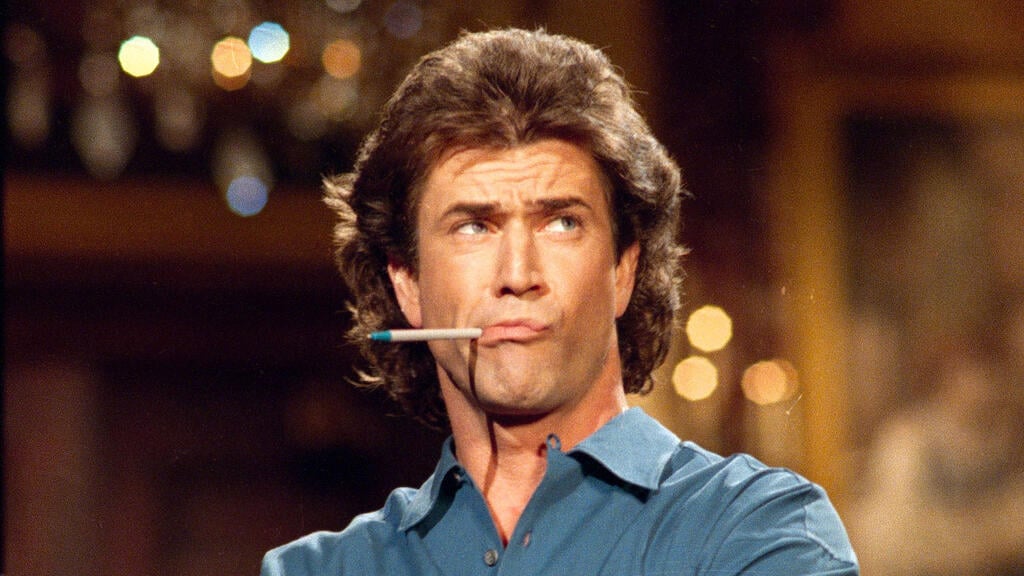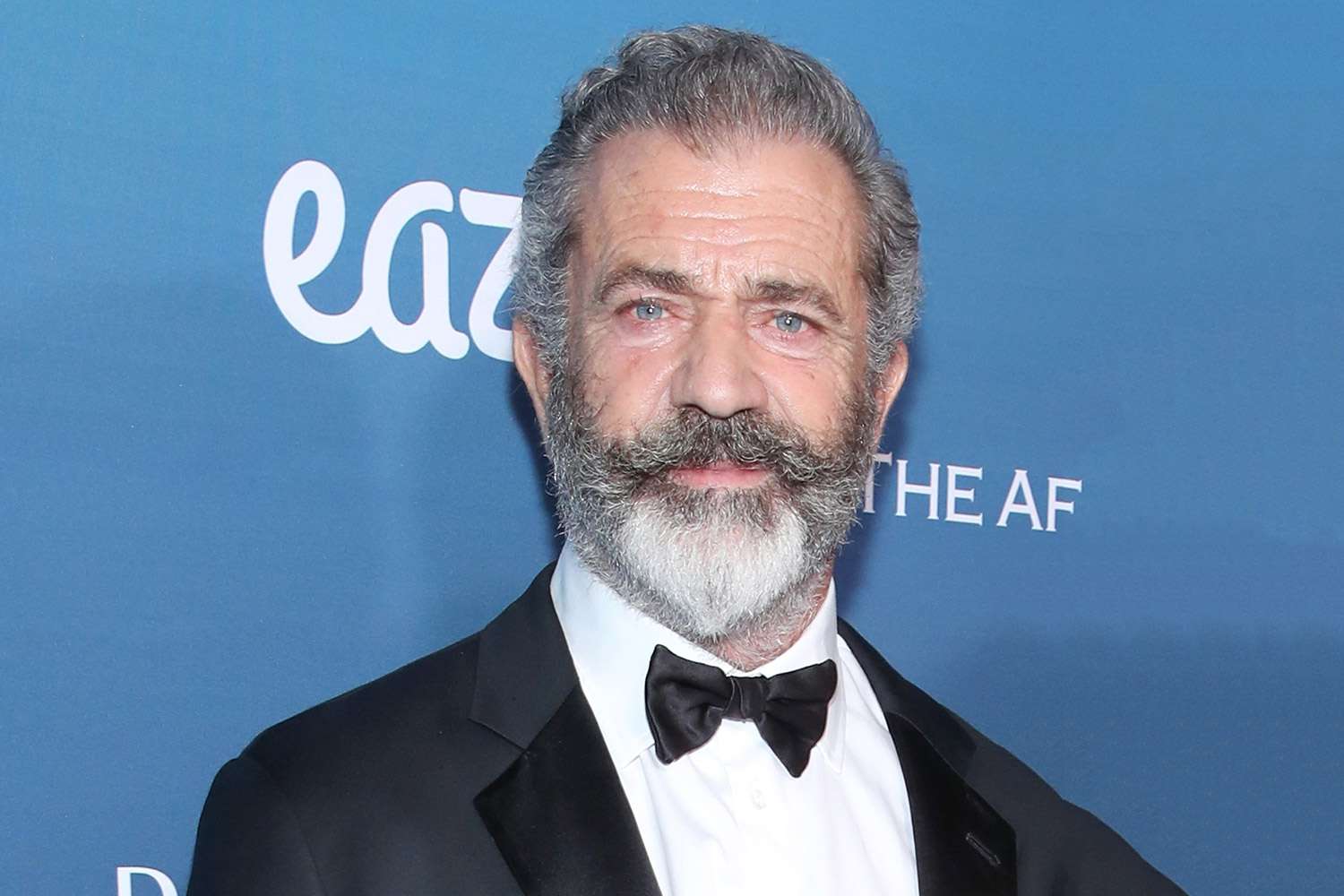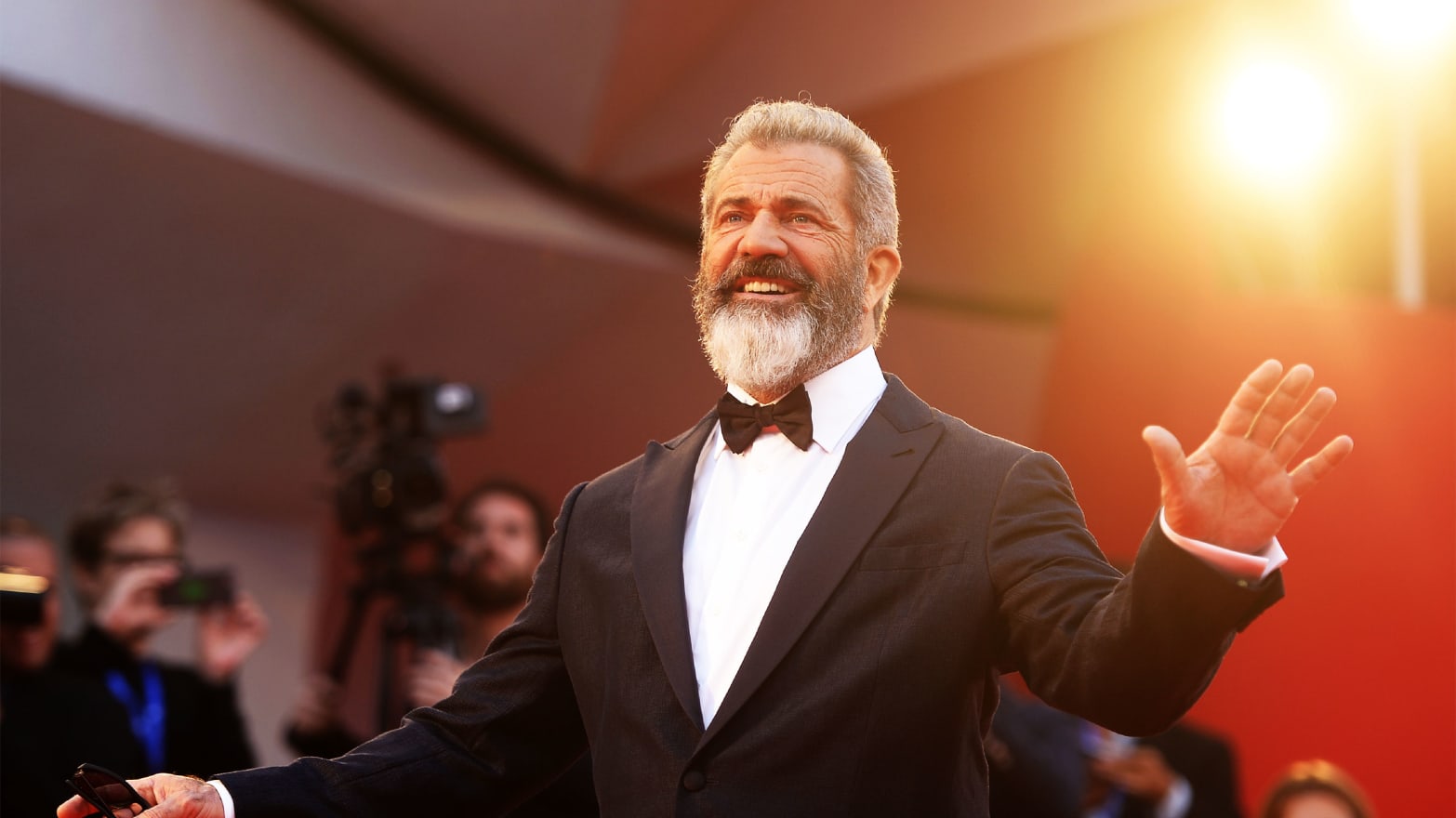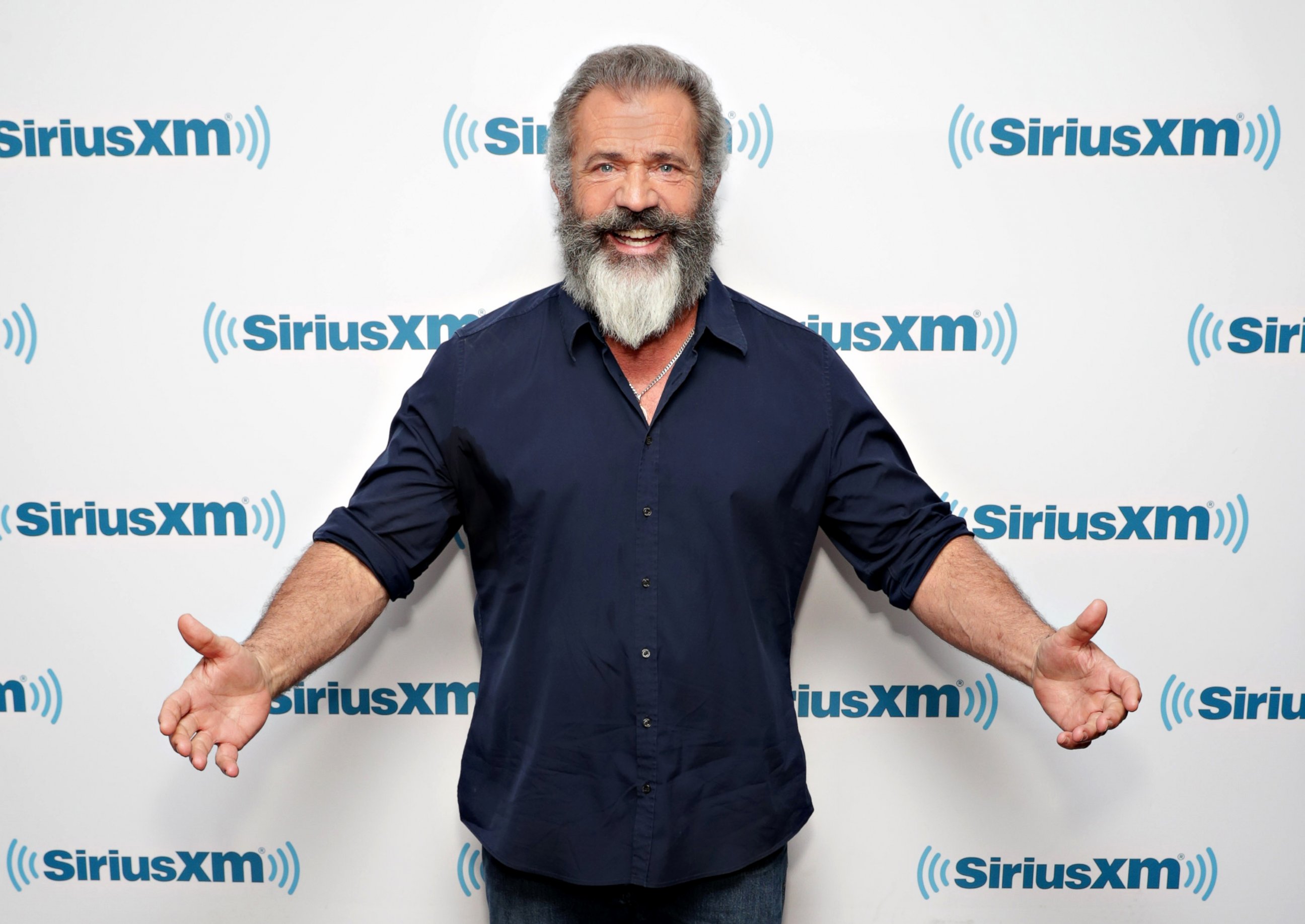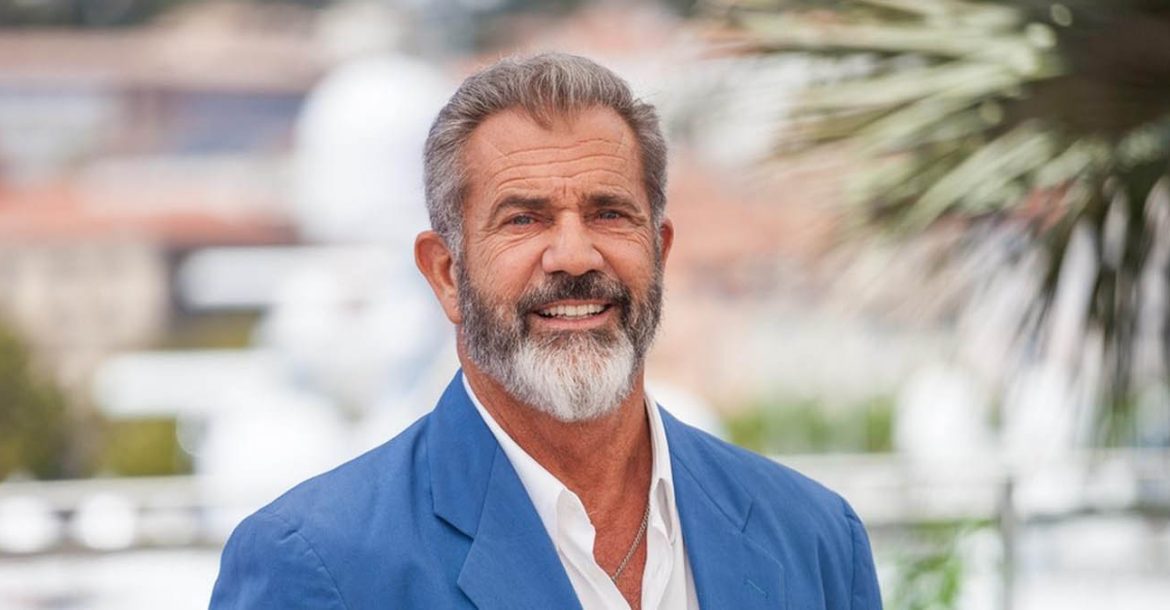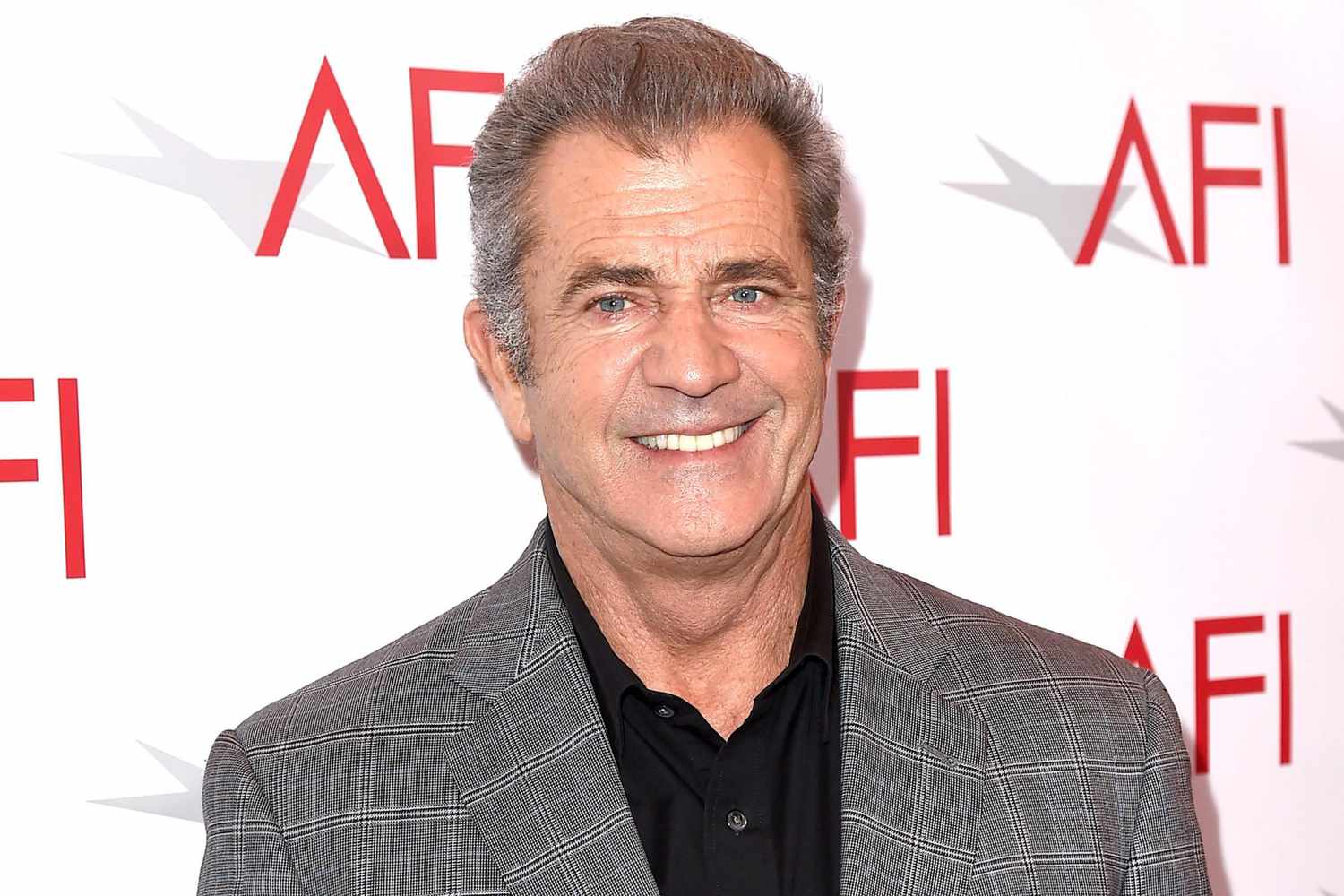Mel Gibson - Legend Actor And Filmmaker With A Controversial Legacy
Explore the captivating journey of Hollywood icon Mel Gibson - from acclaimed performances in "Mad Max" to controversial remarks and a resilient comeback with "Hacksaw Ridge." Uncover the complexities of talent, controversy, and redemption in the life of Mel Gibson.
Author:Emily SanchezReviewer:James PierceJan 16, 202411.9K Shares221.5K Views
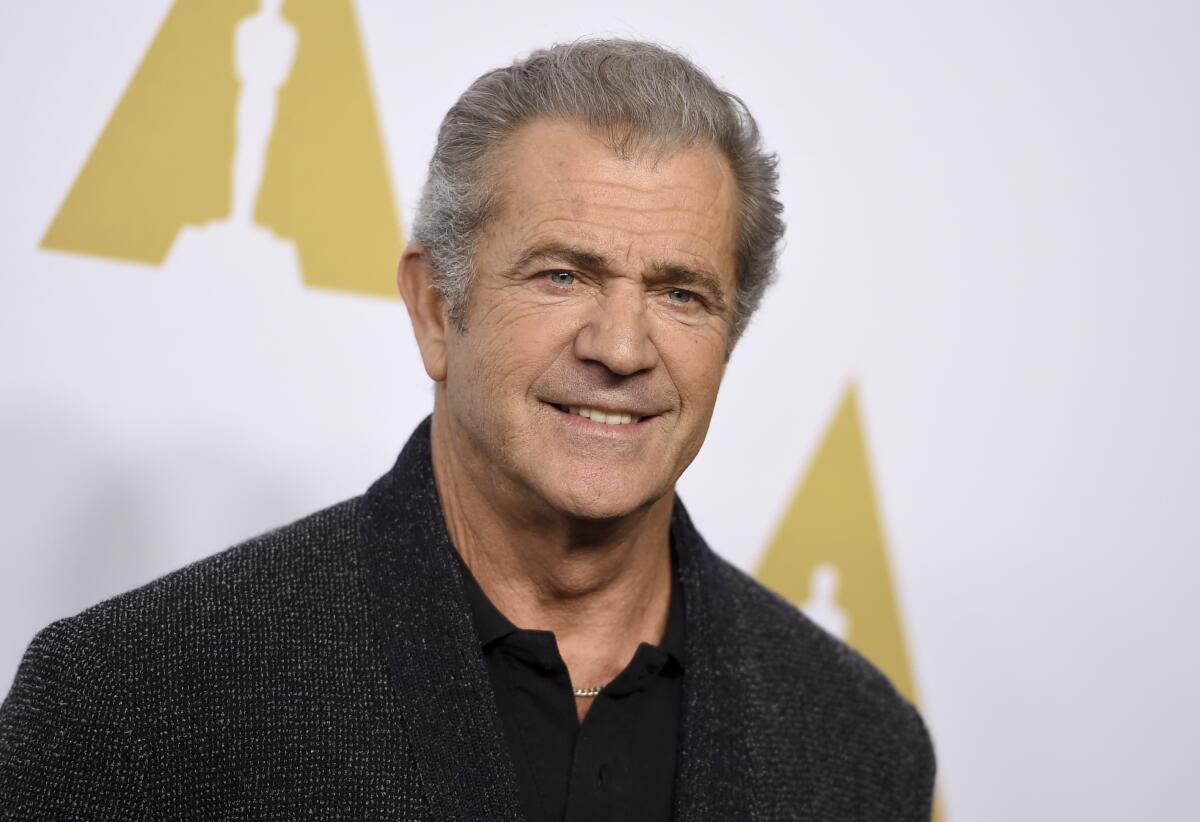
Mel Gibson, a name synonymous with both Hollywood stardom and controversy, has navigated a tumultuous journey in the entertainment industry. Born on January 3, 1956, in Peekskill, New York, Gibson's career is a tapestry woven with iconic roles, acclaimed directorial ventures, and a complex personal narrative.
While celebrated for his contributions to cinema, he is equally known for his controversial remarks and actions, creating a dichotomy that defines his legacy. In this exploration, we delve into the multifaceted persona of Mel Gibson, a man whose talent and turbulence have left an indelible mark on the silver screen.
Quick Facts About Mel Gibson
| Name | Mel Colmcille Gerard Gibson |
| Birthday | January 3, 1956 |
| Profession | Actor, director, producer |
| Net worth | $425 million |
Early Life Of Mel Gibson
Mel Colmcille Gerard Gibson entered the world on January 3, 1956, in Peekskill, New York, as the sixth child in a family of 11 born to Hutton and Ann Gibson. Hailing from a Roman Catholic background with Irish roots, the Gibsons, prompted by the onset of the Vietnam War, made a pivotal decision to relocate to Australia. Fearing the draft might claim his sons, Hutton uprooted the family, setting the stage for Gibson's formative years in Sydney.
Raised in Sydney, Gibson's educational journey led him to St. Leo's Catholic College, an all-boys Catholic high school. Later, he completed his high school education at Asquith Boys High School in New South Wales, Australia. Despite contemplating paths in culinary arts or journalism after graduation, Gibson's trajectory took an unexpected turn when his sister, unbeknownst to him, applied on his behalf to the National Institute of Dramatic Art (NIDA) in Sydney.
Stepping into the world of acting with no prior experience, Gibson successfully auditioned for NIDA, altering the course of his career. His initiation into the realm of performing arts saw him make his stage debut in a NIDA production of "Romeo and Juliet" and his screen debut in the low-budget film "Summer City" (1977).
The year 1977 also marked his graduation from NIDA, propelling him into the Southern Australian Theater Company. Here, he took on lead roles in classical productions such as Oedipus and Henry IV, showcasing his burgeoning talent and setting the stage for the illustrious career that lay ahead.
Acting Career Of Mel Gibson
Mad Max And Lethal Weapon
In 1979, he made a resounding debut with dual roles that showcased his versatility: as a futuristic warrior in the iconic "Mad Max" and as a mentally disabled man in the poignant "Tim," earning him his inaugural Australian Film Institute Award for Best Actor. The latter film marked not only a critical success but also demonstrated Gibson's ability to navigate diverse roles.
"Mad Max," an adrenaline-fueled dystopian thriller, shattered records as the highest-grossing Australian film at the time, amassing over $100 million worldwide. This groundbreaking success catapulted Gibson into international stardom, firmly establishing him as a force to be reckoned with in the cinematic landscape.
His collaboration with acclaimed director Peter Weir further solidified his acting prowess, earning Gibson his second Australian Film Institute Award for his role as a patriotic idealist in the 1981 World War I drama, "Gallipoli." The same year, Gibson returned to his iconic role in "Mad Max 2: The Road Warrior," reinforcing his status as a cinematic icon.
In 1982, Gibson ventured into American cinema with "The Year of Living Dangerously," a romantic drama alongside Sigourney Weaver, marking a pivotal moment in his career. The following year, his American film debut in "The River" garnered critical acclaim and four Academy Award nominations, showcasing Gibson's ability to excel on the international stage.
Amidst his rising fame, Gibson returned to Australia in 1985 to conclude the "Mad Max" trilogy with "Mad Max: Beyond Thunderdome," co-starring the legendary Tina Turner. This venture not only solidified Gibson's standing in the industry but also earned him the distinction of being named People Magazine's first "Sexiest Man Alive."
Following a brief hiatus, Gibson made a triumphant return with the 1987 blockbuster "Lethal Weapon." His portrayal of the volatile cop Martin Riggs opposite Danny Glover's by-the-book character Roger Murtaugh resonated with audiences, propelling the film to immense success. The chemistry between Glover and Gibson spawned three sequels, with "Lethal Weapon 2," "Lethal Weapon 3," and "Lethal Weapon 4" all further cementing the duo's status as an iconic on-screen partnership.
Braveheart
In the wake of 1990's "Hamlet," where Gibson delivered a memorable performance as the tormented prince in Franco Zeffirelli's adaptation, the actor embarked on a new chapter with the formation of his production company, Icon Productions. This venture marked a strategic move to take creative control of his projects, a vision reflected in Icon's early works, such as the 1994 Beethoven biopic "Immortal Beloved" and the 1997 remake of Leo Tolstoy's "Anna Karenina."
However, Gibson's foray into the '90s was not without its challenges, as he navigated films like "Air America" (1990) and the sentimental "Forever Young" (1992). Undeterred, Gibson made a bold leap into the director's chair with his feature directorial debut in 1993, presenting "The Man Without a Face."
The pinnacle of Gibson's directorial ventures came in 1995 with the release of "Braveheart," a project that echoed his passion for storytelling. Serving as both director and lead actor, Gibson brought to life the 13th-century Scottish nobleman Sir William Wallace in this medieval epic. The film not only resonated with audiences but also garnered widespread critical acclaim, securing five Oscars, including Best Picture and Best Director.
Amidst these triumphs, Gibson expanded his repertoire by lending his voice to John Smith in Disney's "Pocahontas" in 1995, showcasing a versatility that went beyond live-action performances. The late '90s saw Gibson take on diverse roles in crime thrillers like "Ransom" (1996), "Conspiracy Theory" (1997) with Julia Roberts, and the independent film "Payback" (1999), each contributing to his ever-evolving career.
The turn of the millennium brought forth more cinematic successes for Gibson, with the highly anticipated war saga "The Patriot" (2000), where he portrayed a reluctant hero during the American Revolution. Simultaneously, he showcased his comedic chops in the romantic comedy "What Women Want" (2000), starring alongside Helen Hunt, Lauren Holly, and Bette Midler.
In 2002, Gibson continued his streak of box office hits with M. Night Shyamalan's "Signs." In this compelling narrative, Gibson portrayed a rural Pennsylvania farmer grappling with the mysterious appearance of 500-foot crop circles in his cornfields.
Mel Gibson Directing And Producing Ventures
In 1989, Mel Gibson embarked on a transformative journey into the realms of production and direction with the establishment of Icon Productions. Gibson's directorial debut came to fruition in 1993 with "The Man Without a Face," a poignant exploration that not only showcased his directorial skills but also positioned him as a storyteller with a nuanced touch.
The true zenith of his directorial prowess, however, manifested itself in the epic masterpiece "Braveheart" (1995). This magnum opus not only secured him an Oscar for Best Director but also solidified his standing as a filmmaker capable of crafting narratives that resonate with global audiences.
In 2004, Gibson took on the monumental task of writing, directing, and personally funding "The Passion of the Christ," a controversial yet powerful portrayal of the last 12 hours of Jesus Christ. The film, which became the highest-grossing R-rated film of all time, grossing over $370 million at the U.S. box office, showcased Gibson's fearlessness in tackling challenging subjects and his ability to spark meaningful conversations through his art.
Gibson continued his directorial success with "Hacksaw Ridge" in 2016, a film that garnered a staggering 14 award nominations, including an Academy Award for Best Achievement in Directing and a Golden Globe for Best Director—Motion Picture.
Gibson's adept storytelling and directorial finesse earned him six awards for the film, including prestigious accolades such as the Broadcast Film Critics Association Award for Best Director and the Hollywood Film Award for Director of the Year.
Accolades And Achievements Of Mel Gibson
Mel Gibson's illustrious career in the entertainment industry has been adorned with a multitude of accolades and achievements, cementing his status as a versatile and influential figure in Hollywood.
- Academy Awards - Gibson's directorial venture, "Braveheart" (1995), emerged as a watershed moment, earning him two Academy Awards – Best Director and Best Picture. The film's sweeping narrative and Gibson's masterful direction secured its place in cinematic history.
- "The Passion of the Christ" Record-Breaker - In 2004, Gibson took on the formidable task of writing, directing, and funding "The Passion of the Christ." Despite its controversial nature, the film became the highest-grossing R-rated film of all time, raking in over $370 million at the U.S. box office.
- "Hacksaw Ridge" Triumph - Gibson's 2016 directorial effort, "Hacksaw Ridge," received widespread acclaim and earned him an Academy Award nomination for Best Achievement in Directing. The film's powerful storytelling and Gibson's adept direction resulted in six awards, including the Broadcast Film Critics Association Award for Best Director and the Hollywood Film Award for Director of the Year.
- Australian Film Institute - Gibson's early acting performances in films like "Tim" and "Gallipoli" earned him the Australian Film Institute Awards for Best Actor, showcasing his talent and versatility.
- People Magazine's "Sexiest Man Alive" - In 1985, Gibson graced the cover of People magazine as its first-ever "Sexiest Man Alive," a testament to his widespread popularity and sex symbol status.
- Icon Productions Legacy - Gibson's founding of Icon Productions in 1989 allowed him to exercise creative control over his projects. The production company has been involved in the creation of notable films such as "Immortal Beloved" and "Anna Karenina," showcasing Gibson's commitment to diverse and compelling storytelling.
Mel Gibson's Net Worth
As of January 2024, Mel Gibson stands as a financial titan in Hollywood, boasting an estimated net worthof approximately $425 million. This staggering figure solidifies his position as one of the wealthiest actors in the history of the entertainment industry.
Movie Salaries And Earnings Of Mel Gibson
Mel Gibson's bankable star power is evident in the multiple $25 million paychecks he has received for a myriad of blockbuster movies. From the extraterrestrial thriller "Signs" to the intense war drama "We Were Soldiers," and the historical epic "The Patriot," to the action-packed "Lethal Weapon 4," Gibson's salary negotiations have consistently placed him in the upper echelons of Hollywood earners.
Notably, Gibson's financial triumphs extend beyond the $25 million benchmark. The suspenseful "Conspiracy Theory" and the high-stakes thriller "Ransom" saw him pocket a staggering $40 million, with equal portions allocated to each film.
Delving into his earlier career, Gibson's salary highlights include a $15 million paycheck for the western-comedy "Maverick" and a $10 million compensation for the action-packed "Lethal Weapon 3," showcasing the consistent premium placed on his talent and box office draw.
Following a period of relative quietude prompted by controversial remarks in the mid-2000s, Gibson engineered a triumphant comeback with the 2016 war epic "Hacksaw Ridge," a film he not only produced but one that became a resounding success. Grossing a formidable $180 million at the box office and clinching two Academy Awards.
In more recent years, Gibson's journey has led him to the set of the 2023 drama, "The Continental: From the World of John Wick," where he assumes the role of Cormac O'Connor. The show's commendable 7.2 IMDb rating and widespread acclaim underscore Gibson's continued relevance and appeal in the ever-evolving landscape of entertainment.
Passion Of The Christ's Earnings
Gibson's determination reached a pinnacle when he decided to invest a substantial $30 million of his own money to finance the film. Undeterred, he further committed an additional $15 million for marketing, bringing his total personal investment to a formidable $45 million.
Gibson's financial acumen extended beyond the initial investment structure. With 50% ownership of the film's profits, the remaining 50% went to the distributor, Newmarket Films. The culmination of this arrangement proved to be a financial triumph. As the revenues from the movie poured in, Mel Gibson's cut soared to an extraordinary $300 million.
However, the financial success story of "Passion of the Christ" didn't conclude with box office earnings alone. The film evolved into a merchandising juggernaut, further swelling Gibson's coffers with an additional $50-$100 million. Capitalizing on the DVD sales boom, which peaked in 2004, Gibson garnered a substantial $75 million, adding another layer to his already impressive financial windfall.
When all revenue streams are considered collectively, Mel Gibson's earnings from "Passion of the Christ" hover in the staggering range of $400–$475 million. This financial triumph not only underscored the film's cultural impact but also positioned Gibson as a shrewd entrepreneur with a keen understanding of the entertainment industry's economic dynamics.
In a testament to the enduring resonance of his passion project, news emerged in January 2023 that a sequel, "The Passion of the Christ: Resurrection," was slated to begin filming later in the year.
Real Estate Properties Of Mel Gibson
From the sun-kissed shores of Malibu to the serene landscapes of Costa Rica and Fiji, Gibson's real estate ventures reflect a taste for opulence and a penchant for acquiring distinctive properties.
Greenwich, Connecticut
In 1994, Gibson made a significant foray into the world of real estate, acquiring Old Mill Farm, a sprawling 75+-acre estate in Greenwich, Connecticut, for a noteworthy $9 million. This historic property, brimming with elegance, became a temporary haven for the actor. Gibson later orchestrated a lucrative deal, selling the estate in July 2007 for a staggering $40 million.
Malibu
In 2008, Gibson set his sights on the captivating vistas of Malibu, acquiring a 5.5-acre home for $11.5 million from the then-married couple David Duchovny and Tea Leoni. This Malibu compound, spanning 5,403 square feet, features 6 bedrooms, 6 bathrooms, and an array of amenities, including offices, a detached gym, a garden cabana/entertainment pavilion, guest houses, and staff quarters.
Surrounded by lush grounds hosting a tennis court, swimming pool, organic gardens, and an oversized chess board, Gibson's Malibu abode is a testament to both luxury and leisure. While he listed the property for sale at different points, as of today, it remains under Gibson's ownership, standing as a testament to his discerning taste.
Playa Barrigona
In April 2007, Gibson extended his real estate footprint to Costa Rica, acquiring a 400-acre ranch known as Playa Barrigona for a substantial $26 million. This tropical haven boasts pristine landscapes, and Gibson's attempts to sell it for as much as $35 million underscore its unparalleled allure.
Mago Island
In December 2004, Gibson added a touch of the South Pacific to his collection by purchasing Mago Island, a private Fijian oasis, for $15 million. This serene island retreat is a testament to Gibson's penchant for exclusive and idyllic getaways.
Mel Gibson Car Collection
Beyond the silver screen and the grandeur of his residences, Mel Gibson's passion for automobiles has manifested in an impressive collection that transcends the realms of luxury and performance.
- 1992 Porsche 968 -Gibson's acquisition of the 1992 Porsche 968, priced at $39,950, echoes his affinity for unique and limited-edition vehicles. Beyond its monetary value, this vintage Porsche stands as a symbol of Gibson's appreciation for timeless design and the powerful, water-cooled, naturally aspirated engine that defines this classic model.
- 2005 Lexus LS 430 -Valued at $56,225, Gibson's 2005 Lexus LS 430 showcases his inclination towards refinement and performance. Opting for this model again, he recognizes the allure of the powerful V8 engine and dynamic handling that defines the Lexus LS 430, making it a reliable choice that blends sophistication with driving prowess.
- 2020 Audi Q7 -As one of his preferred daily drivers, the 2020 Audi Q7, priced at $63,800, reflects Gibson's practical yet stylish approach to commuting. The sleek black midsize SUV combines power and sophistication, making it a reliable and aesthetically pleasing choice for everyday journeys.
- 2008 Range Rover Sport HSE -Owning a 2008 Range Rover Sport HSE valued at $74,000, Gibson revels in the spacious cabin, striking exterior, and impressive handling of this white Land Rover. This luxury SUV stands as a testament to his preference for vehicles that seamlessly blend opulence with practicality.
- 2012 Mercedes-AMG ML63 -Gibson's 2012 Mercedes-AMG ML63, priced at $95,865, epitomizes versatility in both style and performance. As an All-Wheel Drive midsize SUV accommodating five passengers, it promises a remarkable driving experience, showcasing Gibson's appreciation for a harmonious balance of ease and intensity.
- 2017 BMW 750i -Among the gems in his collection, the 2017 BMW 750i stands out as a full-size luxury sedan. Priced at $95,595, this elegant vehicle offers a spacious, high-tech cabin and an array of standard features. It underscores Gibson's unwavering appreciation for sophistication and a driving experience that transcends the ordinary.
Philanthropic Efforts Of Mel Gibson
Mel Gibson has carved a profound legacy as a philanthropist, channeling his success into transformative initiatives that echo his commitment to making a positive difference in the world.
- Healing the Children -Gibson's dedication to the well-being of children shines through his substantial donations to Healing the Children, a charity committed to providing life-saving medical treatment to underserved children globally.
- Local Charities - During a business trip to Singapore in 2007, Gibson demonstrated his global philanthropic reach by making massive donations to a local charity supporting children with terminal illnesses.
- Support for the Arts -Gibson's philanthropic footprint extends to the arts, where he has contributed to the restoration of Renaissance paintings. By investing in the preservation of cultural heritage, he showcases a commitment to ensuring that artistic treasures continue to inspire and enrich the lives of future generations.
- National Institute of Drug Abuse -Gibson's philanthropy isn't confined to specific causes; it extends to combating societal challenges. His substantial donations to the National Institute of Drug Abuse underscore a commitment to addressing the complex issue of substance abuse, reflecting a broader vision for societal well-being.
- Environmental Conservation -Gibson's commitment to environmental conservation is palpable in his support for the El Mirador Basin project, where he donated $500,000. By safeguarding the last vestiges of virgin rainforests in Central America, he champions the protection of biodiversity and the ecological balance crucial for the planet's well-being.
- Hands-On Engagement -Gibson's philanthropy goes beyond financial contributions. His visit to Central America in July 2007, where he met with the president of Costa Rica and made donations to indigenous populations, exemplifies a hands-on approach to philanthropy.
- Green Initiatives -In a move towards sustainable practices, Gibson provided financial assistance to Green Rubber Global for the construction of a tire recycling factory in Gallup, New Mexico.
Personal Life And Divorce Settlement
In 1980, Gibson embarked on the journey of marriage with Robin Moore, a union that blossomed into the shared joy of raising seven children.
Mel Gibson's divorce from Robin Gibson was not only a legal separation but a chapter that set records in celebrity divorces. The settlement, reported to be a staggering $400 million, marked a significant moment in the annals of high-profile divorces.
Following the conclusion of his first marriage, Gibson entered a relationship with Russian musician Oksana Grigorieva, resulting in the birth of their daughter. However, this chapter was marred by allegations of domestic violence, a painful period that ultimately led to a settlement in August 2011.
Grigorieva was given $750,000, joint legal custody, and a residence in Sherman Oaks, California, ensuring the well-being of their daughter until she reached adulthood.
2014, Gibson found solace and new beginnings in the arms of former champion equestrian vaulter and writer Rosalind Ross. Their relationship brought forth the joy of parenthood once again, as they welcomed their son, Lars Gerard, into the world in January 2017.
Controversies And Legal Issues
The tumultuous relationship with Oksana Grigorieva reached a boiling point in 2010 when both parties sought restraining orders against each other. Grigorieva accused Gibson of domestic violence, leading to a police investigation.
A leaked audio recording in July 2010 exposed a violent and racist rant from Gibson, leading to a plea of no contest to a misdemeanor battery charge. The legal fallout included a settlement of $750,000 and the relinquishment of their shared house in Sherman Oaks, California.
Gibson's history is marred by anti-Semitic hate speech and anti-LGBTQ sentiments, resulting in a near decade-long exile from many facets of the Hollywood industry. The fallout from his controversial statements led to blacklisting by producers, directors, agencies, and fellow actors. Only with the release of "Hacksaw Ridge" did Gibson begin to mend bridges within the Hollywood community.
Gibson's battle with alcohol addiction has been a recurring theme in his life. In 1984, he faced legal consequences after a drunk-driving incident in Toronto, resulting in a three-month driving ban in Canada. The nadir came in 2006 when Gibson was arrested for DUI, speeding, and an open container of alcohol.
Pleading no contest, he was sentenced to three years of probation. Gibson's subsequent interviews candidly addressed his struggles with alcoholism and the ongoing journey of recovery.
Facts You Probably Didn't Know About Mel Gibson
- Almost passing up the role of William Wallace in "Braveheart" (1995) due to concerns about his age, Gibson made a unique compromise. He agreed to portray Wallace only if he could direct the film. This decision not only showcased his multifaceted talent but also resulted in an Oscar-winning epic.
- Gibson served as a mentor to the late Heath Ledger, illustrating a bond that transcended the screen.
- Gibson's family's relocation from upstate New York to Sydney, Australia, was triggered by an unexpected event - his father, Hutton Gibson, won as a contestant on "Jeopardy!" in 1968.
- The gestation period for "The Passion of the Christ" (2004) was remarkably lengthy. Gibson's journey with the project began in 1992, a testament to his unwavering commitment to a vision that materialized over more than a decade.
- Mel Gibson has been open about his battle with bipolar disorder, shedding light on the personal struggles he faced amid the challenges of fame and artistic pursuits.
- Beyond the silver screen, Gibson possesses a horseshoe kidney, a rare anatomical condition where two kidneys are fused into one.
- Gibson's entry into acting was serendipitous. Encouraged by his sister, who applied without his knowledge, Gibson's first audition occurred after he got into a fight the night before, resulting in a face beaten badly enough to land him the role.
- In interviews surrounding "The Passion of the Christ," Gibson candidly admitted to battling depression and even contemplating suicide. The film, in many ways, became a cathartic journey for him, a tool for personal healing.
- Gibson turned down the opportunity to voice a parody of himself in "Family Guy," later expressing regret for passing up what he considered a hilarious episode.
- Mel Gibson declined the role of Kyle Reese in "The Terminator" (1984) and James Bond in both "The Living Daylights" (1987) and "GoldenEye" (1995).
- Gibson has his private chapel on his grounds, where he attends mass daily, showcasing a deeply rooted connection to his faith.
- Among the iconic "Mad Max" series, "The Road Warrior" (1981) holds a special place in Gibson's heart as his favorite installment.
- Gibson made history as the first Australian actor to be paid $1,000,000 for a film role, underscoring his groundbreaking impact on the industry.
People Also Ask
Is Mel Gibson Still Acting?
Yes, Mel Gibson is still active in the film industry, both as an actor and a filmmaker.
How Many Children Does Mel Gibson Have?
Mel Gibson has nine children. He had seven with his first wife, one with Oksana Grigorieva, and one with his current partner, Rosalind Ross.
What Awards Has Mel Gibson Won For His Films?
Mel Gibson has won several awards, including two Academy Awards for "Braveheart" (1995) - Best Director and Best Picture.
Has Mel Gibson Ever Directed A Comedy Film?
While Mel Gibson is known for his work in action and drama genres, he directed the comedy film "The Man Without a Face" (1993), showcasing his versatility.
Conclusion - Mel Gibson
As the curtains fall on the exploration of Mel Gibson's life and career, the tapestry remains intricate and nuanced. His journey from the iconic Max Rockatansky to the accolades of "Braveheart" and the later controversies exemplifies the highs and lows inherent in the tumultuous world of fame. In the annals of Hollywood history, Mel Gibson stands as a testament to the enduring debate surrounding talent, accountability, and the pursuit of redemption in the spotlight.
Jump to
Quick Facts About Mel Gibson
Early Life Of Mel Gibson
Acting Career Of Mel Gibson
Mel Gibson Directing And Producing Ventures
Accolades And Achievements Of Mel Gibson
Mel Gibson's Net Worth
Movie Salaries And Earnings Of Mel Gibson
Passion Of The Christ's Earnings
Real Estate Properties Of Mel Gibson
Mel Gibson Car Collection
Philanthropic Efforts Of Mel Gibson
Personal Life And Divorce Settlement
Controversies And Legal Issues
Facts You Probably Didn't Know About Mel Gibson
People Also Ask
Conclusion - Mel Gibson

Emily Sanchez
Author

James Pierce
Reviewer
Latest Articles
Popular Articles
